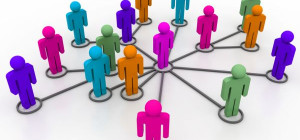 With the rapid advancement of technology, communication methods have evolved to become faster and more efficient. Email has become the primary mode of communication in the digital era, but faxing remains an essential tool in various industries, such as healthcare, legal, and finance. To bridge the gap between these two communication methods, the innovative concept of email to fax has emerged. Email to fax brings secure faxing capabilities by combining the convenience of email with the reliability and security of traditional faxing.
With the rapid advancement of technology, communication methods have evolved to become faster and more efficient. Email has become the primary mode of communication in the digital era, but faxing remains an essential tool in various industries, such as healthcare, legal, and finance. To bridge the gap between these two communication methods, the innovative concept of email to fax has emerged. Email to fax brings secure faxing capabilities by combining the convenience of email with the reliability and security of traditional faxing.
Benefits of Email to Fax
The integration of email and fax services eliminates the need for physical fax machines and paper documents. This leads to cost savings and environmental benefits by reducing paper usage and eliminating the need for dedicated fax lines. With email to fax, documents can be sent and received digitally, making it easier to store, organize, and retrieve them when needed.
Email-to-fax services enhance productivity and convenience. Users can send faxes directly from their email accounts, eliminating the need for separate software or devices. This feature is particularly advantageous for remote workers or individuals who are constantly on the move. It allows them to send and receive faxes from anywhere with an internet connection, providing flexibility and efficiency in their work processes.
Furthermore, the use of a secure online fax solution offers increased security and confidentiality. Email-to-fax transmissions are encrypted, ensuring that sensitive information remains protected during transmission. This is especially important when dealing with legal, financial, or personal documents that require a high level of security.
Email-to-fax services facilitate seamless integration with existing digital workflows. Users can easily attach various file formats to their emails, including PDFs, Word documents, or scanned images, and send them as faxes. This eliminates the need for manual document conversion and ensures that recipients receive files in a format they can easily access and use.
Security Features of Email to Fax
Security is a critical concern when transmitting sensitive and confidential information. While email is vulnerable to interception and unauthorized access, email-to-fax technology addresses these concerns by incorporating robust security features. One of the primary security advantages of email to fax is the encryption of faxed documents. When sending a fax via email, the document is encrypted using secure protocols, ensuring that it remains confidential during transmission.
Moreover, email-to-fax systems often provide audit trails and delivery confirmations. These features allow senders to track the status of their faxes and ensure that they reach the intended recipients. Audit trails provide a detailed record of the fax transmission, including the date, time, sender, and recipient information. This traceability enhances accountability and assists in resolving any disputes or issues that may arise during the faxing process.
Furthermore, email-to-fax technology enables secure storage and archiving of faxed documents. Traditional faxes are prone to be misplaced or lost, which can have severe consequences, particularly in industries where legal compliance is crucial. Email-to-fax systems offer the option to save received faxes directly to digital storage, ensuring they are securely archived and easily retrievable when needed. This feature enhances data integrity and protects against loss or unauthorized access.
Future Prospects
The future of email-to-fax technology appears promising, with further advancements on the horizon. As more businesses and industries recognize the advantages of email to fax, the demand for this technology is expected to grow. Consequently, people can anticipate the development of more sophisticated features and integration with other communication platforms.
One potential avenue for future development is the integration of artificial intelligence (AI) technologies. AI-powered email-to-fax systems could leverage natural language processing to enhance document categorization, indexing, and search capabilities. This would further streamline document management and retrieval processes, leading to increased efficiency and productivity.
Additionally, with the rise of cloud computing, email-to-fax systems could leverage cloud infrastructure to offer scalable and cost-effective solutions. Cloud-based email-to-fax services would eliminate the need for on-premises servers, allowing businesses to scale their faxing capabilities easily and reduce operational costs.
Furthermore, the integration of email to fax with other collaborative tools, such as project management software or customer relationship management systems, would enable seamless communication and document sharing. This integration would promote collaboration, reduce manual data entry, and improve overall workflow efficiency.
Choosing an Email-to-Fax Provider
Compatibility is crucial. Ensure the provider’s service seamlessly integrates with the existing email client and infrastructure. Verify compatibility with popular platforms such as Gmail, Outlook, or other email systems used by the organization. Compatibility extends beyond email, as the provider should offer support for various file formats, such as PDF, Word, or image files, allowing flexibility in sending and receiving faxes.
Security measures should be a priority. Look for a provider that employs robust encryption protocols, ensuring the confidentiality and integrity of faxed documents. Data protection compliance, such as adherence to GDPR or HIPAA regulations, is an additional advantage for organizations handling sensitive information.
Reliability is another crucial aspect. The provider should offer high server uptime and redundant infrastructure to ensure continuous availability. A reliable email-to-fax service eliminates the risk of missed or delayed faxes, which can have significant consequences in business operations.
Consider the user interface and ease of use. An intuitive interface facilitates a seamless transition between email and fax functionalities, reducing the learning curve for employees. Look for features like contact management, fax archiving, and the ability to schedule or automate fax transmissions, enhancing productivity.
Evaluate pricing plans. Look for a provider that offers competitive pricing based on the organization’s faxing needs. Consider factors such as the number of faxes sent per month, international faxing rates, and any additional charges for features like electronic signatures or large file attachments.
Email-to-fax technology brings secure faxing capabilities by combining the convenience of email with the reliability and security of traditional faxing. The benefits of email to fax make it an attractive option for businesses across various industries. The incorporation of robust security features ensures the confidentiality and integrity of faxed documents.
Looking ahead, the future of email-to-fax technology holds great potential for further advancements. As businesses continue to embrace digital transformation, email-to-fax will undoubtedly play a vital role in modernizing and streamlining communication processes while maintaining the necessary security measures. By embracing this technology, organizations can enjoy the best of both worlds: the efficiency of email and the security of faxing.







